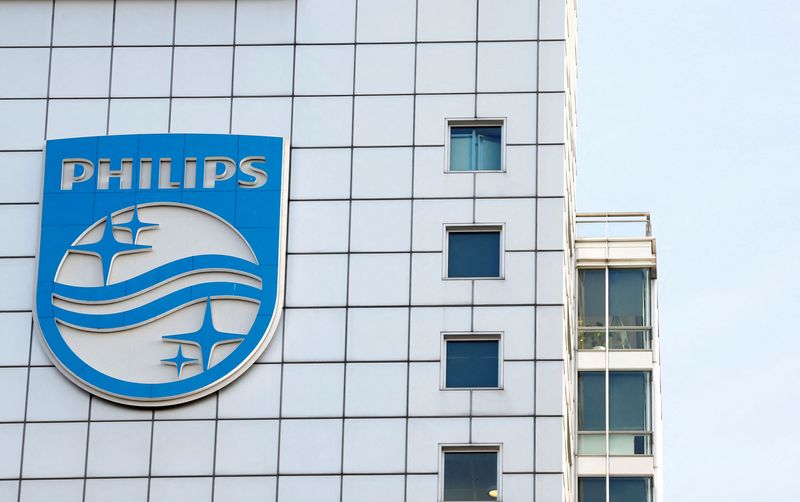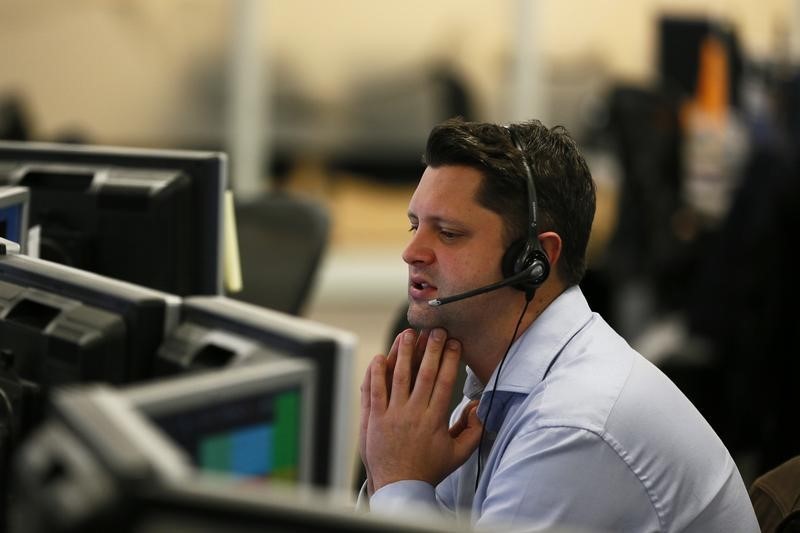 © Reuters. FILE PHOTO: The logo of Dutch technology company Philips is seen at the company headquarters in Amsterdam, Netherlands, January 29, 2019. REUTERS/Eva Plevier/File Photo
© Reuters. FILE PHOTO: The logo of Dutch technology company Philips is seen at the company headquarters in Amsterdam, Netherlands, January 29, 2019. REUTERS/Eva Plevier/File Photo AMSTERDAM (Reuters) -Dutch health technology company Philips said on Monday it expects sales to recover strongly in the second half of the year, while a steep decline due to global shortage of parts is likely to persist in the coming months.
Philips earlier this month warned that supply chain woes would hit profit and a ventilator recall needed to be expanded, sending its shares down over 15% on their worst day on the financial markets in decades.
“We expect to start the year with a comparable sales decline, followed by a recovery and strong second half of the year,” Chief Executive Officer Frans van Houten said in a statement.
This should lead to between 3% and 5% growth in comparable sales in 2022, with a 40 to 90 basis points improvement in the adjusted earnings before interest, tax and amortisation (EBITA) margin, he added.
Overall growth will be held back by the sleep & respiratory care unit, which is still working on the massive recall of breathing-aid machines launched last year, amid concerns that a type of foam used in the devices could degrade and become toxic.
Growth, excluding this unit, is expected to reach 5% to 6%, Van Houten said.
Philips has set aside 725 million euros ($820.41 million) to repair and replace some 5 million devices worldwide, but that sum does not cover the possible costs of litigation, with the company facing more than a hundred class action suits. Fears of a large claims bill already lopped around 15 billion euros off Philips’ market value in the past nine months.
The Amsterdam-based company said its comparable sales fell 10% in the fourth quarter of 2021, while adjusted EBITA dropped 35% to 647 million euros, in line with provisional numbers released on Jan. 12.
($1 = 0.8837 euros)
Fusion Media or anyone involved with Fusion Media will not accept any liability for loss or damage as a result of reliance on the information including data, quotes, charts and buy/sell signals contained within this website. Please be fully informed regarding the risks and costs associated with trading the financial markets, it is one of the riskiest investment forms possible.

